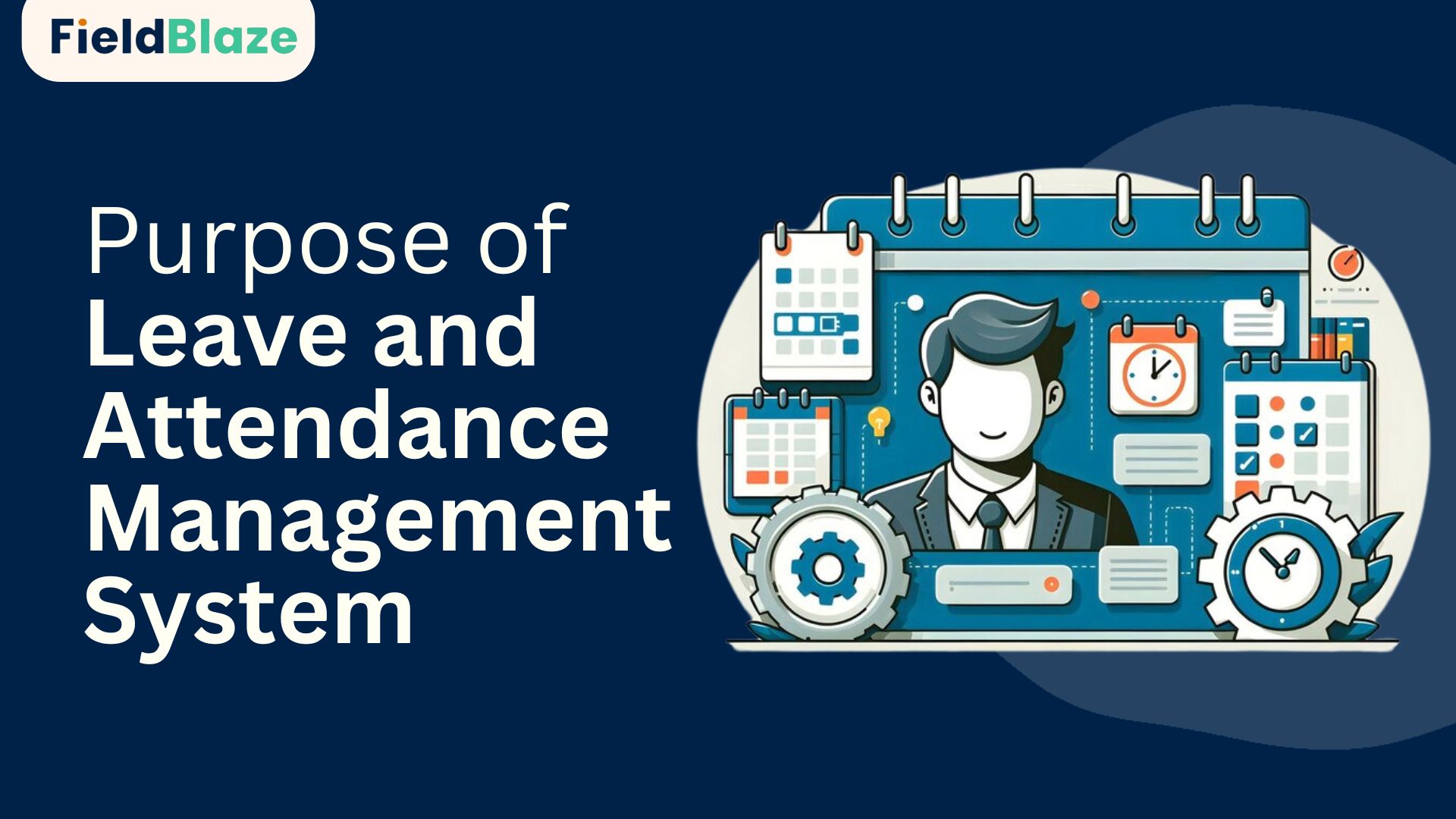Why Your Organization Needs an Attendance & Leave Management System
Attendance & Leave Management System (ALMS) Overview
Managing employee attendance and leave can be a challenging task for any organization. With traditional manual methods, tracking time and managing leave requests can become cumbersome and prone to errors. An Attendance & Leave Management System (ALMS) addresses these challenges by automating the process, ensuring accuracy, and providing valuable insights. This system is essential for optimizing workforce management, enhancing productivity, and ensuring compliance with labor laws.
Real-life Example
Consider a mid-sized company with over 200 employees. Prior to implementing an ALMS, the HR department relied on paper timesheets and manual leave applications. This system led to frequent discrepancies in attendance records, delayed leave approvals, and significant administrative overhead. After adopting an ALMS, the company saw a 50% reduction in administrative time, improved accuracy in attendance records, and higher employee satisfaction due to the streamlined leave process.
What is an Attendance Management System?
An Attendance Management System is a digital solution designed to track and manage employee attendance. It automates the process of recording when employees start and end their workday, as well as monitoring their punctuality and absenteeism. This system often integrates with other HR functions, such as payroll and performance management, to provide a comprehensive view of employee attendance.
Key Components:
- Clock-In/Out: Methods such as biometric scanners, RFID cards, or mobile apps.
- Real-Time Tracking: Monitoring employee attendance as it happens.
- Reporting: Generating attendance reports for analysis and decision-making.
For organizations seeking the best tools to enhance their attendance management, we’ve identified the Top 5 Best Attendance Tracking Software in India. These solutions offer robust features tailored to meet diverse organizational needs, ensuring efficiency and accuracy in managing employee attendance. Discover how these top-rated systems can transform your attendance tracking and management, making it more streamlined and effective.
What is a Leave Management System?
A Leave Management System is a software tool that helps organizations handle employee leave requests, approvals, and tracking. It manages various types of leave such as vacation, sick leave, and personal leave. The system ensures that leave policies are applied consistently and that leave balances are accurately maintained.
Key Components:
- Leave Request Submission: Online forms or apps for employees to request leave.
- Approval Workflow: Automated routing of leave requests to managers for approval.
- Leave Balances: Tracking of accrued and used leave.
For a deeper understanding of how an advanced leave management system can enhance your organization’s efficiency, check out our benefits of the FieldBlaze Leave Management System. This resource offers insights into how FieldBlaze can transform leave management processes, streamline operations, and improve overall employee satisfaction.
Purpose of Leave and Attendance Management System
The purpose of an attendance & leave management system is multifaceted:
- Automation: Reduces manual processes, minimizing errors and administrative workload.
- Accuracy: Ensures accurate tracking of attendance and leave, reducing discrepancies.
- Compliance: Helps organizations adhere to labor laws and company policies.
- Data Insights: Provides real-time data and reports for better management and decision-making.
Features of the Leave and Attendance Management System
Here’s a detailed table outlining the key features:
| Features | Description |
|---|---|
| Automated Attendance Tracking | Captures clock-in and clock-out times using biometric, RFID, or mobile methods. |
| Leave Request Management | Facilitates submission, approval, and tracking of leave requests. |
| Attendance Reports | Generates detailed reports on attendance patterns, absenteeism, and tardiness. |
| Leave Balances | Maintains accurate records of accrued and used leave balances. |
| Integration with Payroll | Syncs attendance and leave data with payroll systems to ensure accurate salary calculations. |
| Compliance Management | Assists in meeting labor laws and company policies related to attendance and leave. |
| Mobile Access | Allows employees and managers to access the system via mobile devices for convenience. |
| Self-Service Portal | Enables employees to view their own attendance records, leave balances, and request status. |
| Alerts and Notifications | Sends automated reminders and alerts for upcoming leave or attendance issues. |
| Customizable Leave Policies | Adapts to different leave policies and entitlements specific to the organization. |
Why Use Attendance & Leave Management for Employees?
For employees, an efficient Attendance & Leave Management System offers:
- Ease of Use: Simplifies the process of applying for and managing leave.
- Transparency: Provides clear visibility into leave balances and application statuses.
- Accuracy: Reduces errors and discrepancies in attendance records.
- Convenience: Access to personal attendance and leave information through mobile or web-based portals.
Does Your Organization Need Attendance & Leave Management?
If your organization experiences issues with manual tracking, such as frequent errors, inefficiencies, or compliance problems, an Attendance & Leave Management System is highly beneficial. It’s particularly advantageous for:
- Large Organizations: Managing a significant number of employees and diverse leave policies.
- Growing Companies: Scaling operations and maintaining efficiency.
- Companies with Complex Leave Policies: Ensuring consistent application of leave rules.
Disadvantages of Attendance & Leave Management
While the benefits are substantial, there are potential disadvantages:
- Initial Costs: The upfront investment in software and implementation.
- Training Requirements: Time and resources needed to train employees and managers.
- Technical Issues: Reliance on technology which may lead to challenges if the system experiences downtime.
Benefits of Attendance & Leave Management
The benefits of implementing an ALMS include:
- Increased Accuracy: Reduces human errors in tracking and managing attendance and leave.
- Enhanced Efficiency: Automates repetitive tasks, freeing up HR resources for more strategic activities.
- Improved Compliance: Helps ensure adherence to labor laws and company policies.
- Better Decision-Making: Provides valuable data and insights for managing the workforce and planning.
10 Reasons Why Your Organization Needs an Attendance & Leave Management System
1. Accuracy in Record-Keeping
Explanation: Traditional methods of tracking attendance and leave, such as manual timesheets or spreadsheets, are prone to errors and inaccuracies. An Attendance & Leave Management System (ALMS) automates data collection through digital tools like biometric scanners, RFID cards, or mobile apps, ensuring precise and reliable attendance records. This minimizes the risk of errors related to manual entry, leading to accurate payroll processing and compliance with labor regulations.
Real-life Example: A manufacturing company switched from manual timecards to an automated system, reducing payroll discrepancies from 5% to less than 1% and enhancing overall accuracy in employee records.
2. Reduced Administrative Burden
Explanation:Managing attendance and leave manually involves significant administrative effort, from processing leave requests to updating records. An ALMS automates these tasks, allowing HR personnel to focus on more strategic activities. Automated workflows handle leave approvals, attendance tracking, and report generation, streamlining administrative processes and reducing the time spent on manual tasks.
Real-life Example: A retail chain implemented an ALMS and saw a 40% reduction in time spent by HR on managing leave requests and attendance tracking, freeing up valuable resources for other important tasks.
3. Enhanced Compliance
Explanation:Organizations must comply with various labor laws and company policies regarding attendance and leave. An ALMS helps ensure adherence by automatically applying rules and generating compliance reports. This reduces the risk of legal issues related to non-compliance and ensures that company policies are consistently followed.
Real-life Example: A financial services firm used an ALMS to maintain compliance with complex leave regulations, avoiding potential fines and legal challenges by ensuring accurate application of labor laws.
4. Real-Time Visibility
Explanation:An ALMS provides real-time access to attendance and leave data, enabling managers and HR teams to monitor employee status and make informed decisions quickly. This real-time visibility helps in managing workforce effectively, identifying attendance patterns, and addressing issues such as absenteeism promptly.
Real-life Example: A tech company utilized real-time attendance data to address patterns of absenteeism, resulting in a 25% decrease in unplanned absences and improved team productivity.
5. Cost Efficiency
Explanation:Manual tracking of attendance and leave can be costly due to the administrative time required and the potential for errors that may lead to financial discrepancies. An ALMS reduces these costs by automating processes and providing accurate data, leading to cost savings in payroll administration and error correction.
Real-life Example: An organization reduced payroll processing costs by 30% after implementing an ALMS, thanks to decreased administrative workload and fewer payroll errors.
6. Improved Employee Experience
Explanation:Employees benefit from a streamlined process for requesting and managing leave. An ALMS provides a user-friendly interface where employees can easily submit leave requests, track their leave balances, and receive prompt notifications. This enhances transparency and satisfaction, reducing frustration associated with manual leave processes.
Real-life Example: A healthcare provider’s implementation of an ALMS led to higher employee satisfaction scores, as staff appreciated the easy-to-use leave request system and timely notifications.
7. Comprehensive Reporting
Explanation:ALMS solutions offer robust reporting capabilities, providing detailed insights into attendance patterns, leave usage, and workforce trends. These reports aid in strategic decision-making, helping organizations understand absenteeism trends, evaluate the impact of leave policies, and plan for staffing needs.
Real-life Example: A large corporation used comprehensive attendance reports to identify and address patterns of absenteeism, leading to more effective workforce planning and a 15% improvement in attendance rates.
8. Integration Capabilities
Explanation:An ALMS can integrate with other HR systems, such as payroll, performance management, and employee databases, creating a seamless flow of information across different functions. This integration ensures that attendance and leave data is consistently updated and accurately reflected in all relevant systems.
Real-life Example: A multinational company integrated its ALMS with its payroll system, resulting in streamlined payroll processing and accurate salary calculations, improving overall operational efficiency.
9. Flexibility
Explanation:An ALMS can be customized to accommodate various leave policies and attendance tracking methods specific to an organization’s needs. This flexibility allows businesses to adapt the system to their unique requirements, whether they involve different types of leave, varying accrual rates, or specific attendance tracking methods.
Real-life Example: A government agency customized its ALMS to manage different types of leave entitlements for various employee categories, ensuring compliance with diverse leave policies and enhancing overall system efficiency.
10. Mobile Access
Explanation:Modern ALMS solutions offer mobile access, enabling employees and managers to interact with the system from anywhere. Mobile functionality allows for convenient submission of leave requests, real-time attendance tracking, and easy access to attendance records, supporting remote work and flexibility.
Real-life Example: A global consulting firm saw increased employee engagement and satisfaction when it implemented a mobile-accessible ALMS, allowing employees to manage their leave requests and track attendance while traveling or working remotely.
Conclusion
An Attendance and Leave Management System is a vital tool for modern organizations seeking to optimize their workforce management processes. By automating attendance tracking and leave management, you can enhance accuracy, improve efficiency, and ensure compliance with labor regulations. For a comprehensive and effective solution, consider FieldBlaze (Best Field Force Management Software), a product of CloudCentric, which offers one of the best attendance and leave systems in Noida. Embrace this technology to transform how you manage attendance and leave and experience the benefits of streamlined operations and satisfied employees.
Attendance & Leave Management System (ALMS) – Frequently Asked Questions
An Attendance & Leave Management System (ALMS) automates the tracking of employee attendance and leave requests, helping organizations improve accuracy, efficiency, and compliance.
Talk to us: info@fieldblaze.com

ALMS is a digital tool that automates employee attendance tracking and leave management. It records clock-in/clock-out times, monitors absenteeism, and manages leave requests, ensuring accurate records and streamlined workflows.
It reduces administrative workload, improves record accuracy, provides real-time data for decision-making, ensures compliance with labor laws, and generates detailed reports on attendance and leave patterns.
Yes. Employees can submit leave requests online via web or mobile apps, track approval status, and view leave balances, making the process convenient and transparent.
ALMS automates policy application, tracks leave entitlements, and generates compliance reports, helping organizations adhere to labor regulations and internal policies consistently.
Key features include automated attendance tracking (biometric, RFID, or mobile), leave request management, real-time reporting, leave balance tracking, payroll integration, alerts/notifications, and customizable leave policies.
Yes. ALMS can integrate with payroll, performance management, and HR databases, ensuring consistent data flow and reducing manual entry errors.
By providing an easy-to-use interface, real-time leave balances, automated notifications, and mobile access, ALMS simplifies attendance and leave management, enhancing transparency and satisfaction.
Modern ALMS solutions offer mobile access, allowing employees and managers to track attendance, submit leave requests, and view reports from anywhere, supporting remote work and flexibility.
Potential challenges include initial setup costs, training requirements, technical issues, and resistance to adopting new technology among employees.
FieldBlaze provides a user-friendly, comprehensive ALMS solution with real-time tracking, automated leave management, seamless integrations, mobile access, and expert support—helping organizations optimize workforce management efficiently.


